How to take the perfect pet photograph
Have you ever tried to take a photo of your pet but found it tricky? You need our tips!
Emma is a professional photographer and one of our RSPCA Young Photographer Awards judges. She’s helping Indi, aged eight, using a mobile phone to photograph her lovely cat, Goose.
And, if you get some good snaps, you can enter them into the RSPCA Young Photographer Awards, open until midday on 15 August.
Before you get started
What you will need
- a camera, tablet or mobile phone
- a pet (yours or ask a friend or family member if you can photograph theirs)
- toys and treats
- (optional) a tripod (a special camera stand) or something to rest your camera on, if you need to hold the camera steady for a long time
Method
Instructions
Take time to hang out with your pet
Where do they sleep? What's their favourite toy? Do they have any funny or cute habits? All these things can give you ideas for photos that tell a story about your pet.
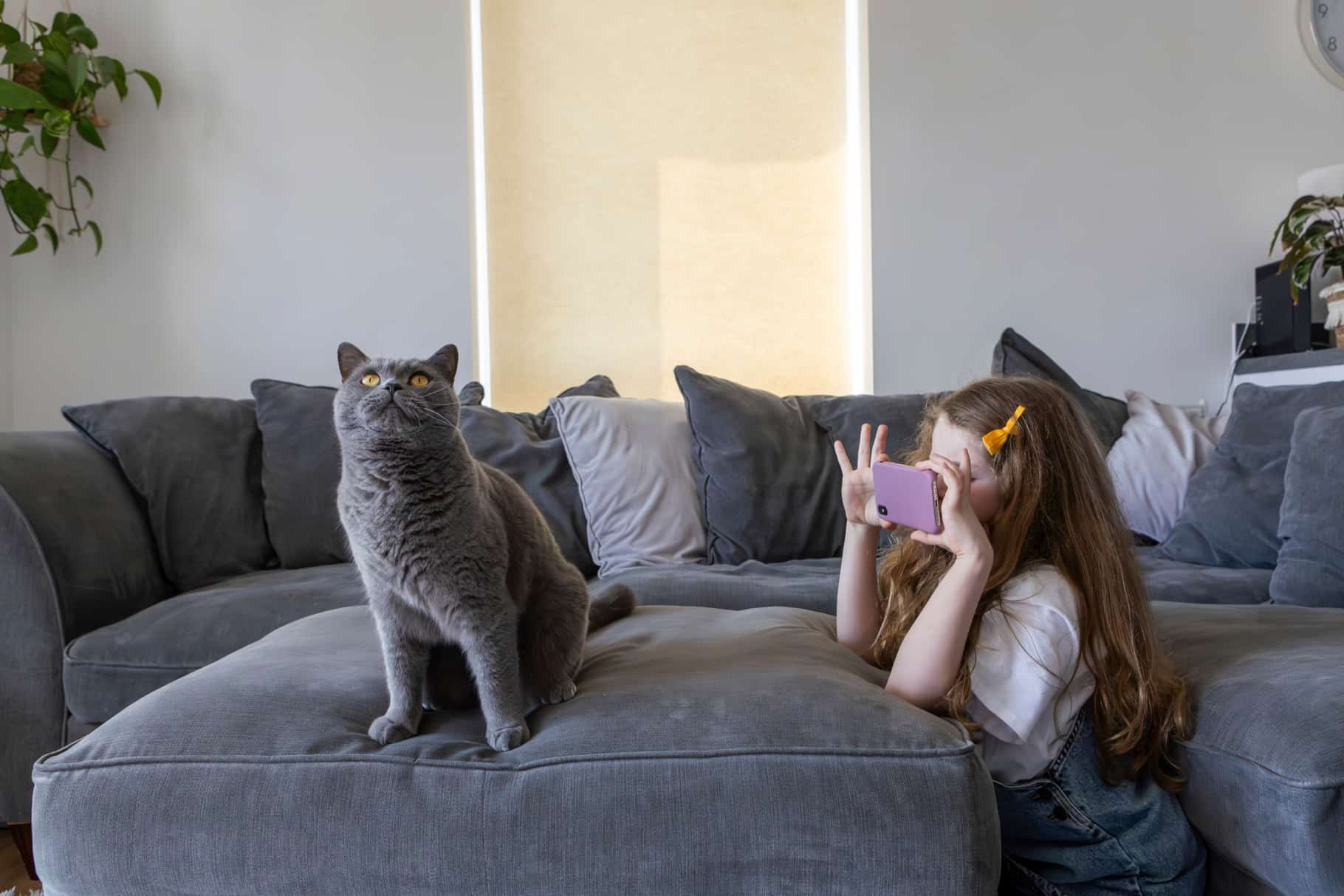
Decide on the best location.
Shoot indoors, in the garden, or in your pet’s favourite place, such as the park or beach. Once you’ve chosen a good spot, clear away items you don’t want in shot as you don’t want your pic to look cluttered.
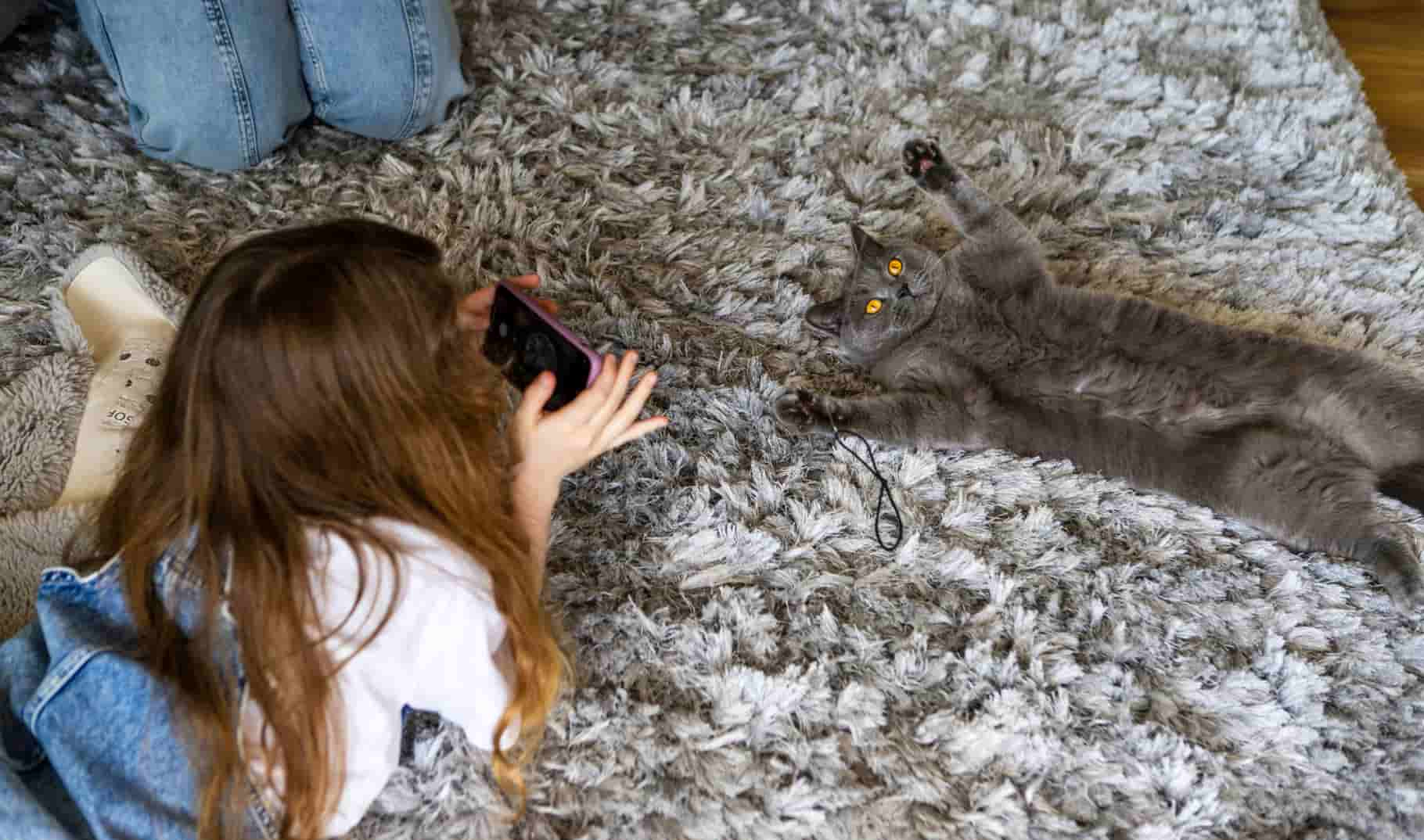
Be patient
When you’re taking photographs of your pet, the winning shot might not come straight away. Try photographing your pet every day for a week so you’ll have lots of options to choose from.

Try different angles!
Try photographing them from the floor, at your pet’s eye level, or maybe from above. Sometimes an unusual view can turn the ordinary into the extraordinary.
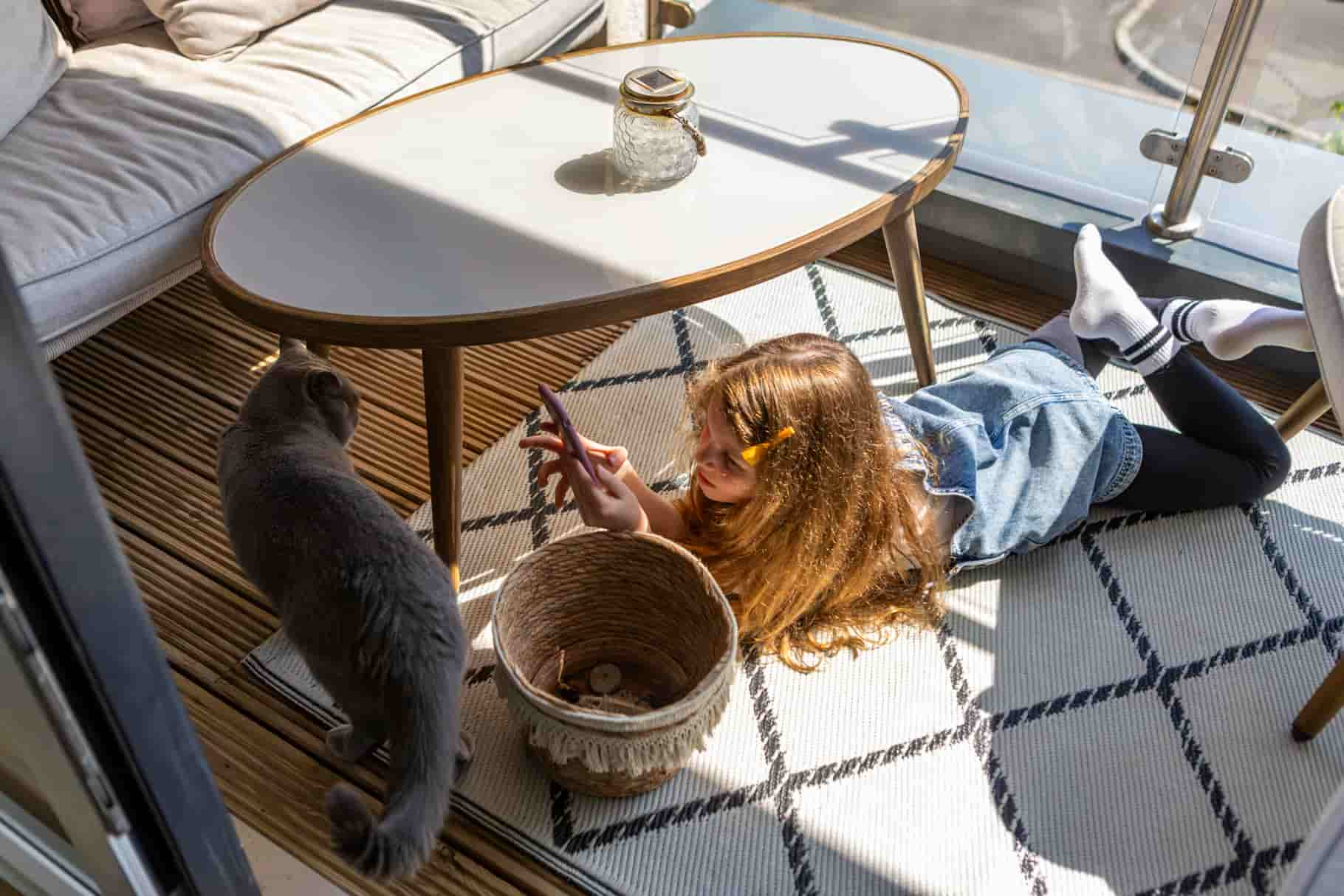
Encourage your pet’s natural behaviours
You know their personality well, so what sort of activities show off their character? A favourite toy or treat can come in handy to interest them. If your pet’s body language is telling you they don't seem happy with you photographing them, give them some space and wait for another time when they’re more relaxed.
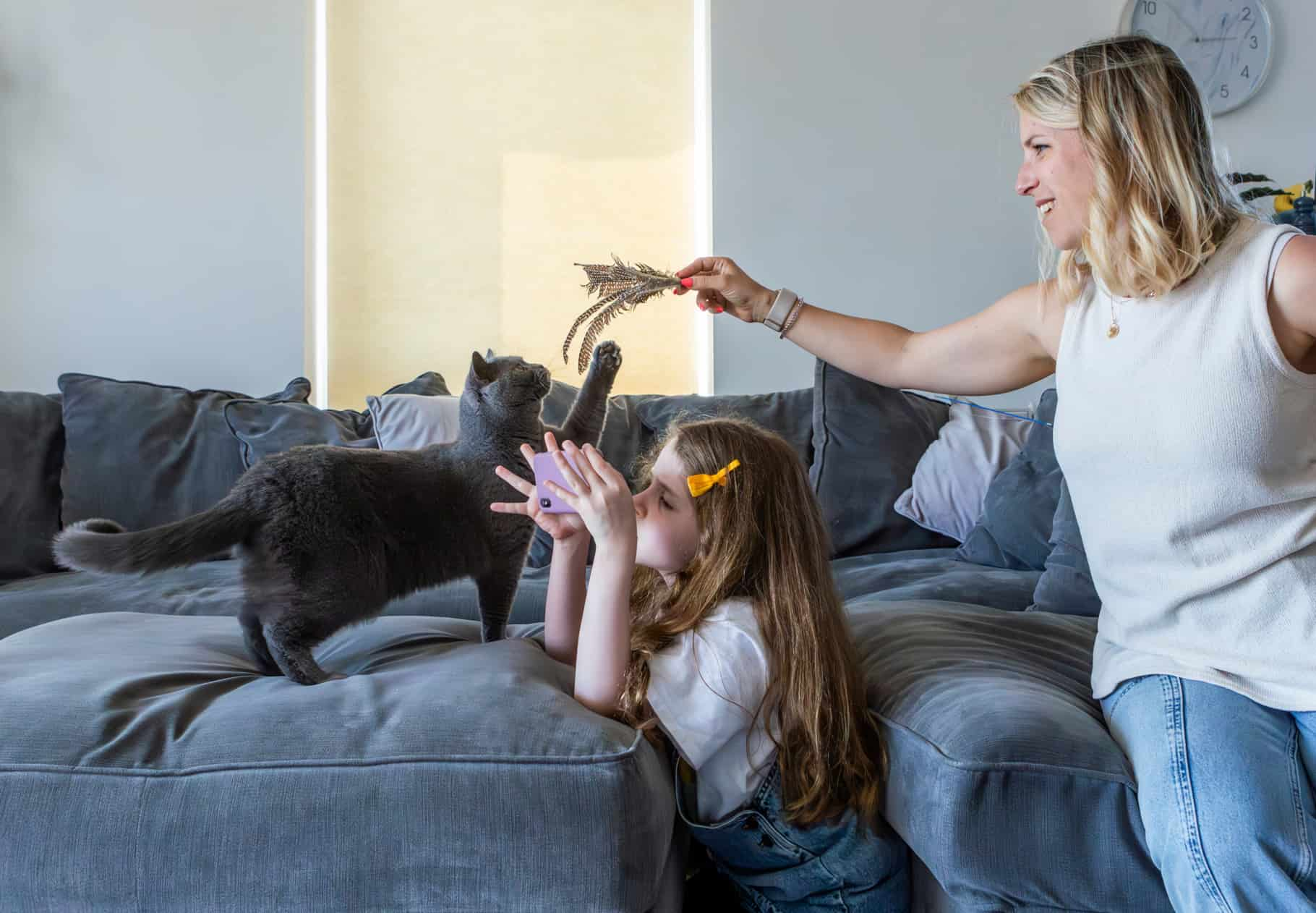
Don’t make your pet do anything they don't want to do or that may harm them.
Our judges don't want to see animals dressed up, wearing any unnecessary items of clothing such as glasses, or put into any situations, places or poses they’re not happy with.


Think about lighting
Mornings or late afternoons are usually good for natural daylight that’s not too bright. Remember that most animals find strong, sudden light very uncomfortable, so try turning off your flash, if you can, and use natural light instead.
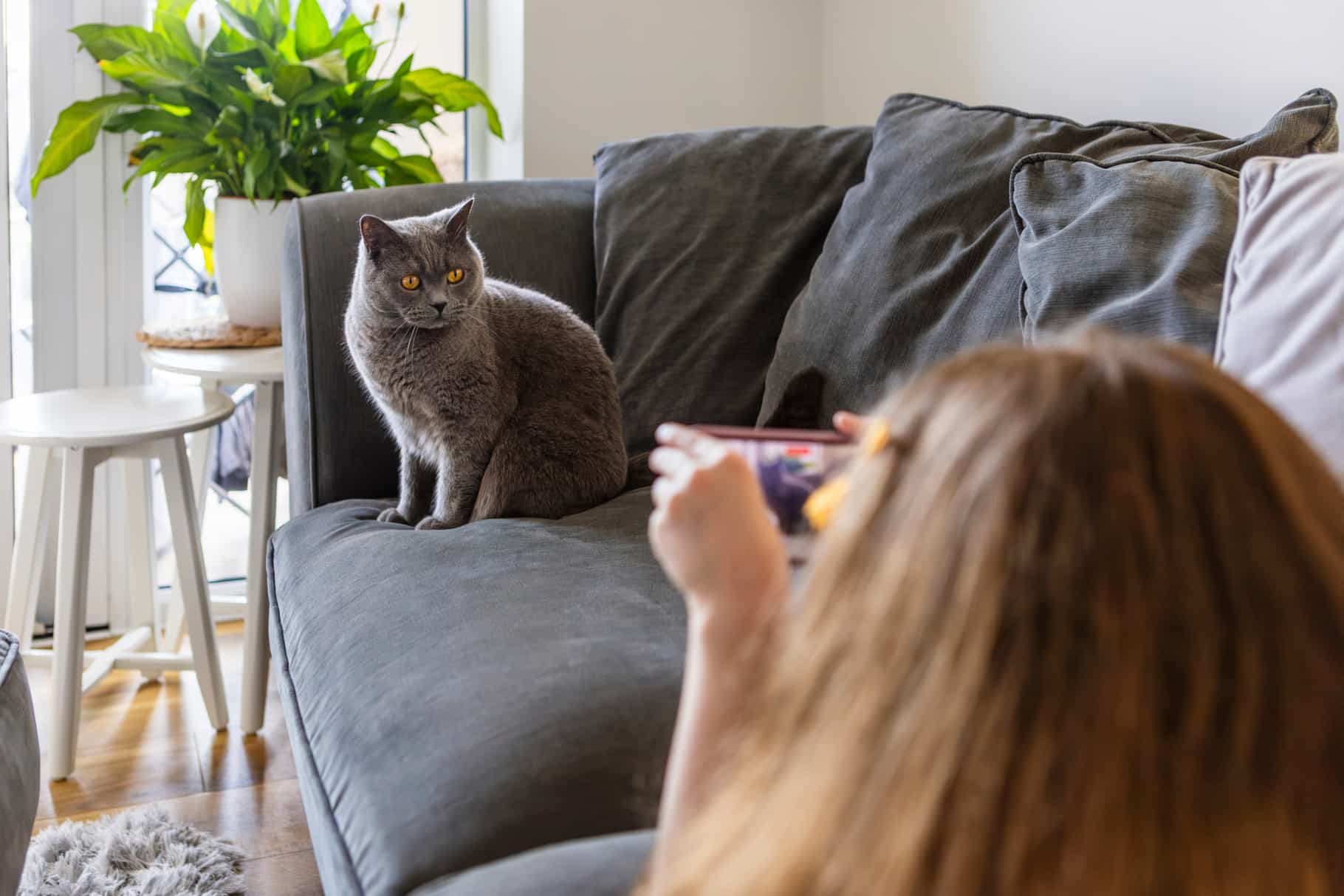
Enter your photo!
And once you’ve taken your winning image, enter our amazing RSPCA Young Photographer Awards. Good luck!
